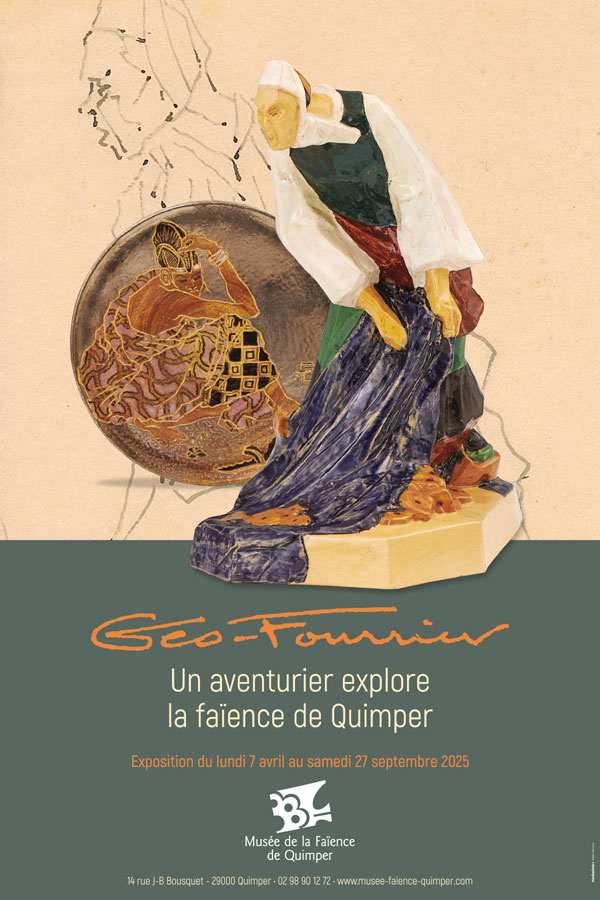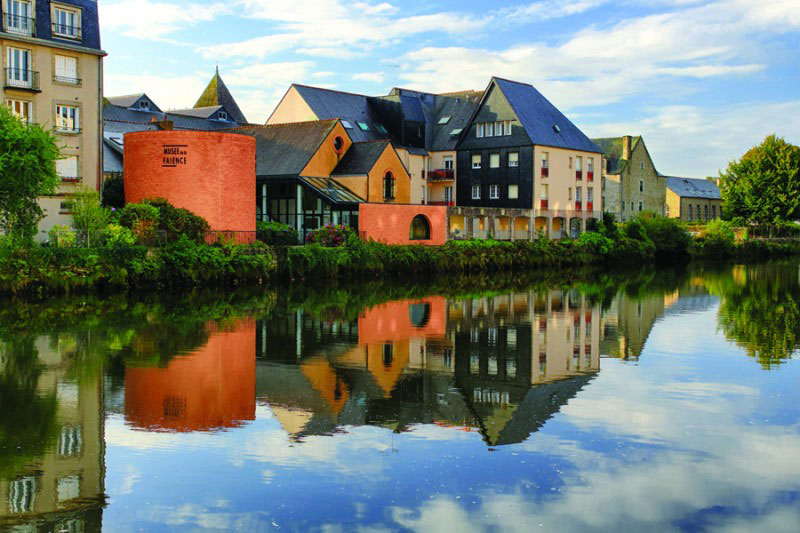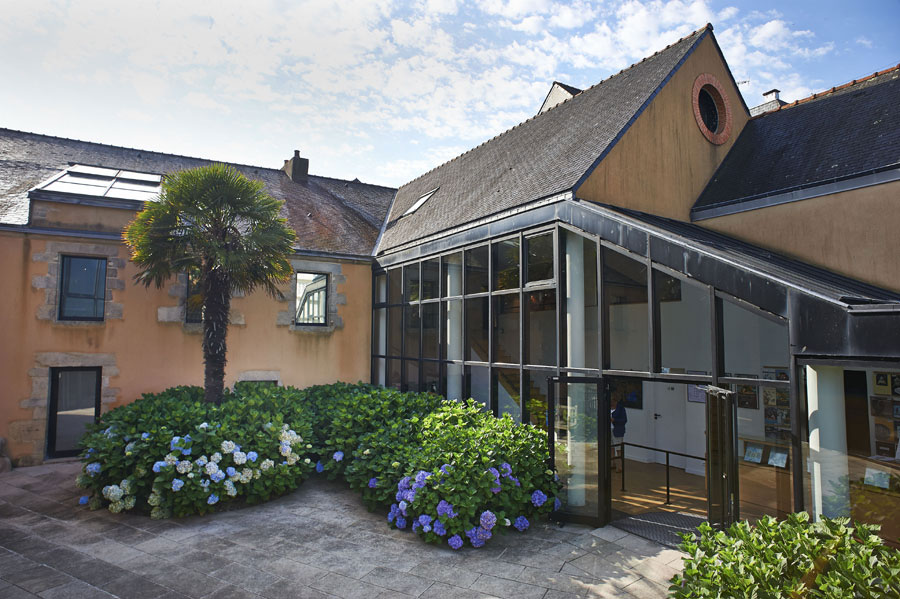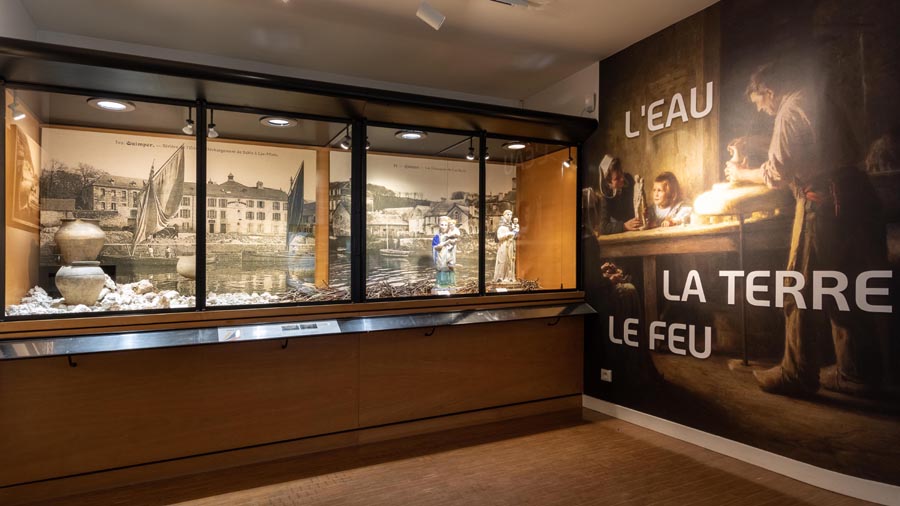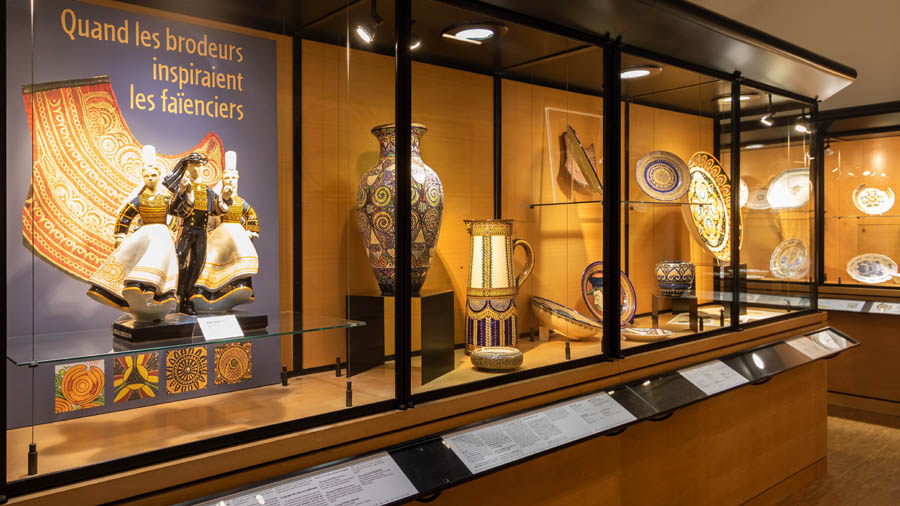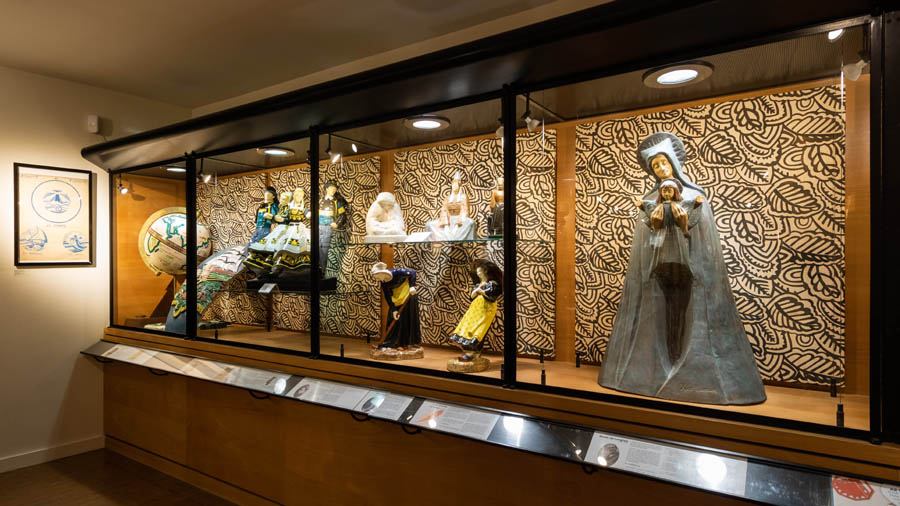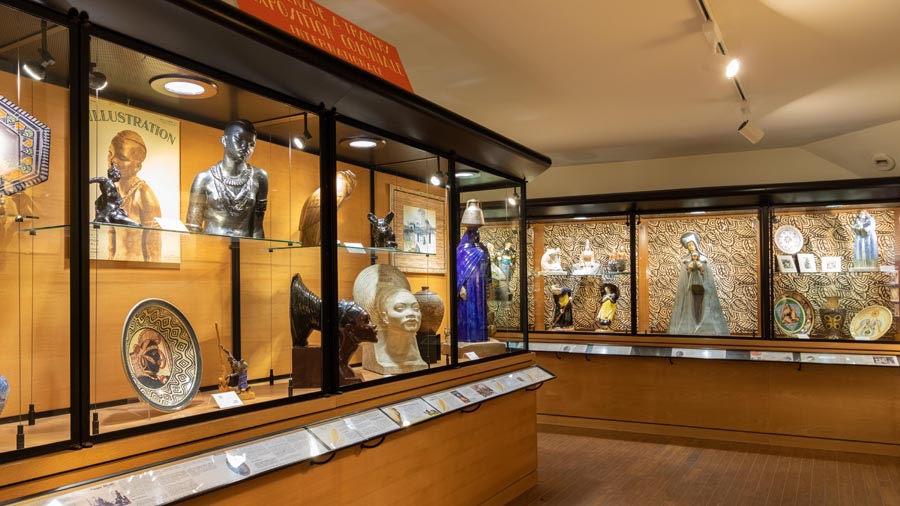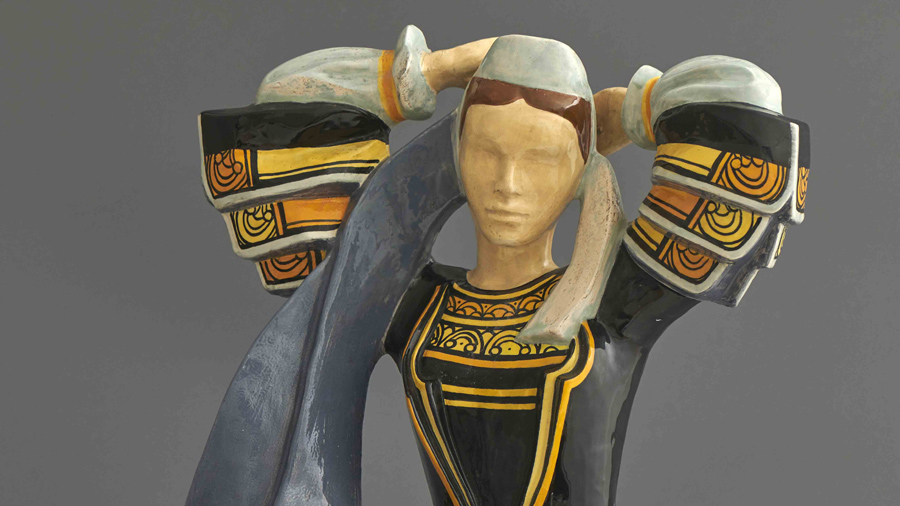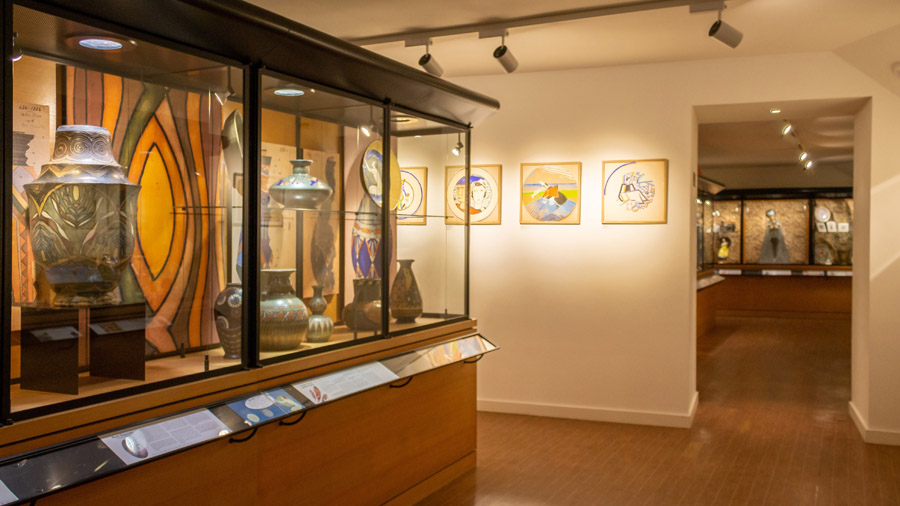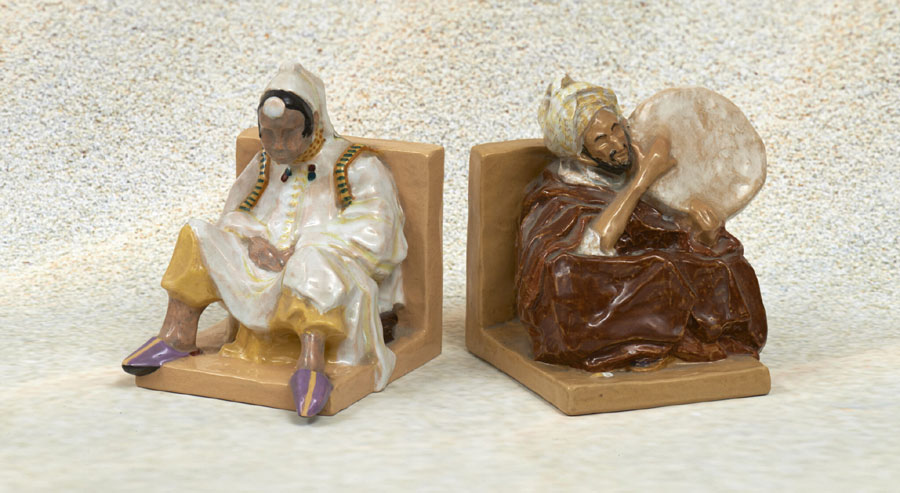Museum of Earthenware
Nos animations hebdomadaires :
♦ Les lundis, mercredis et samedis au musée, c’est visite guidée : une visite guidée de l’exposition permanente vous sera proposée les lundis et mercredis à 15h30 et une visite guidée de l’exposition temporaire les mercredis (15h00) et samedis (15h30) jusqu’au 27 septembre (tarif = votre ticket d’entrée).Tout public
Durée : 30 à 45 minutes
Prestation gratuite sur présentation du billet d’entrée.
♦ Atelier de modelage à votre disposition à l’entrée du musée (10€ l’atelier par personne), séances encadrées les mercredis et samedis entre 10h30 et 11h30 (résa sur la billetterie en ligne)
Tout public
Durée : 60 à 90 minutes
10 € par participant à l’atelier
Exposition temporaire 2025 : Géo-Fourrier, un aventurier explore la faïence de Quimper
Du lundi 7 avril 2025 -> samedi 27 septembre 2025
Au programme de cette année, une monographie consacrée à l’artiste touche à tout Georges Géo-Fourrier. Il est né à Lyon en 1898. Son adolescence est marquée par une maladie qui l’alite pendant plusieurs années. Il profite de ce temps pour assouvir sa passion pour le Japon et le dessin. Rétabli, il entame une carrière de dessinateur à Paris. Entre 1927 et 1931, il voyage régulièrement en Afrique avant de découvrir la Bretagne et de s’installer à Quimper.
Un artiste touche à tout, chez Henriot et chez HB
Géo-Fourrier pratique la peinture, la gravure, l’illustration. Aussi, il crée des céramiques, des bijoux, des pipes ainsi qu’une grande série de cartes postales dont un grand nombre sont consacrées à la Bretagne. Ses voyages ethnographiques sont illustrés par le biais de plusieurs centaines de photographies. D’ailleurs, ces dernières sont conservées en grande partie au Musée de l’homme. Quant à la céramique, elle donne l’opportunité de créer des pièces inspirées de ses rencontres en Afrique ou en Bretagne, tout d’abord pour Henriot (1924-1950) puis chez HB en fin de carrière (1950-1966).
Une exposition, trois ambiances
Ainsi, de sa passion pour le Japon, de ses voyages en Afrique et son amour pour la Bretagne et principalement pour le pays bigouden, l’exposition présentera des ambiances bien différentes mettant en avant un style qui lui est propre. Sans compter que les œuvres céramiques de l’artistes seront accompagnées d’un incomparable ensemble de planches à l’encre de Chine, d’aquarelles, de dessins à la gouache et de travaux préparatoires, pour certaines jamais présentées. A savoir que ces œuvres illustrent la diversité des approches artistiques d’un artiste malheureusement peu connu. Pour finir, l’exposition Géo-Fourrier, un aventurier explore la faïence de Quimper sera à découvrir dès le lundi 7 avril 2025.
Rates
| Rates | Category | Min (€) | Max (€) |
|---|---|---|---|
| Adult rate | Individuals | 5.00 | |
| Youth rate 18 to 25 years | Individuals | 4.00 | |
| Children's rate 7 to 17 years | Individuals | 3.00 | |
| Family rate 2 adults and 2 children under 12 years | Individuals | 12.00 | |
| Free of charge Under 7 years | Individuals | 0.00 |
Geolocation
Museum of Earthenware
14, rue Jean-Baptiste Bousquet 29000 QUIMPER
Get directions
